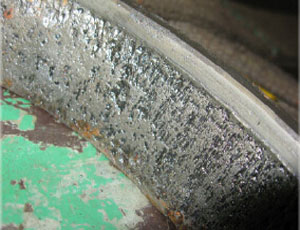The ability of lubricating oil to separate water and resist emulsion is an important performance characteristic for application involving water contamination and turbulence.
Poor water separability of lubricating oils can lead to
(1) Rusting & corrosion
(2) Possible cavitation
(3) Premature lubricant degradation
(4) Mechanical failure, Etc


Water Separation Ability by Demulsibility Characteristic of Lubricant, Test Method ASTM D1401
Objective:
To determine the water separation characteristics of the lubricant.
Apparatus and Procedure:
40 ml of test oil is heated to test temperature of 130°F (or 180°F) as 40 ml of distilled water is gradually added to a graduated cylinder containing the mixture. Once the contents reach test temperature, a stir rod is lowered into the cylinder to stir the mixture at 1,500 rpm for 5 minutes. At constant temperature, the contents are left undisturbed, the separation of the oil and water is recorded at one minute intervals for the first ten minutes, then at 15, 20, 30, 40, 50 and 60 minutes.
Reported results:
The three measurements for oil/water/emulsion (cuff or collar) are presented in that order and are separated by forward slashes. Test minutes, are shown in parenthesis, i.e., 40/40/0 (15).
Significance:
This test method provides a guide for determining the water separation characteristics for oils. This test was developed specifically for steam turbine oils having viscosities of 32 to 150 cSt at 40°C. This is the method recommended for use with synthetic oils.



